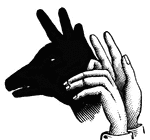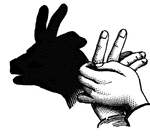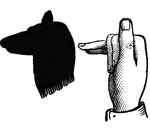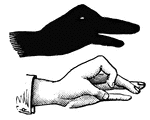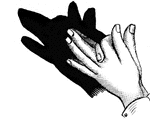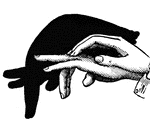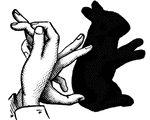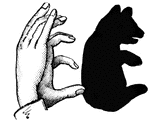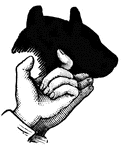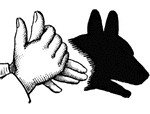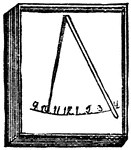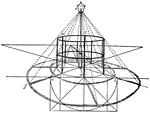
Attack at Harrisonburg
"Gallant attack by 150 of the Pennsylvania Bucktails, led by Colonel Kane, upon a portion of General…
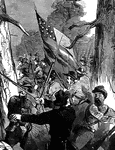
Attack at Harrisonburg
"Gallant attack by 150 of the Pennsylvania Bucktails, led by Colonel Kane, upon a portion of General…
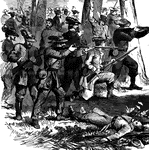
Attack at Harrisonburg
"Gallant attack by 150 of the Pennsylvania Bucktails, led by Colonel Kane, upon a portion of General…

Attack at Harrisonburg
"Gallant attack by 150 of the Pennsylvania Bucktails, led by Colonel Kane, upon a portion of General…

Hobkirk's Hill
"View at the Spring; Hobkirk's Hill. It is at the hed of a ravine, scooped out of the northeastern slope…
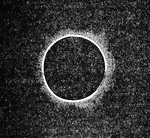
Eclipse
"An Eclipse is an interception or obscuration of the light of the sun, moon, or other heavenly body…
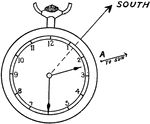
True meridian
"The position of the true meridian may be found as follows: Point the hour hand of a watch towards the…
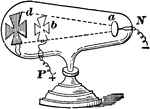
Shadow Tube
a is called the cathode, b is a plate of metal mounted inside the tube and in the path of the rays;…
Cathode
This illustration shows rays attracted to a magnet, and exerting force upon the object against which…
Moon Eclipse
"When the Moon falls into the shadow of the Earth, the rays of the Sun are intercepted, or hid from…
Sun Eclipse
"When the moon psses between the Earth and Sun, there happens an eclipse of the Sun, because then the…
Umbra
"Umbra and Penumbra. A solar eclipse, with the penumbra, d, c, and the umbra or dark shadow is seen…
Diminish Shadow
"Since A is producing light and larger than object B, the shadow of B continuously shrinks to a single…
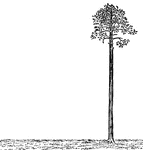
Palm Tree Perpendicular to Ground
Illustration of a palm tree that is perpendicular to the ground. The tree is perfectly straight, as…
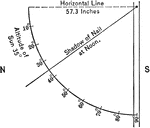
Heliotrope
An instrument used in geography to measure angles of the sun at different times of the day.

Cat and Dancing Dogs
A cat sitting solemnly as dogs dance down the hallway, in the story "How Cats Came to Purr."
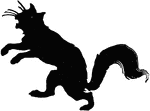
Sick Cat
The silhouette illustration of the sick cat after swallowing the coffee mill in the story, "How Cats…
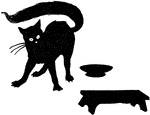
Shocked Cat
The silhouette illustration of the shocked cat after swallowing the coffee mill in the story, "How Cats…
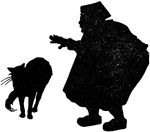
Man Petting Cat
The silhouette illustration of the man petting the cat walking in "How Cats Came to Purr."

Genie
The silhouette illustration of the genie scaring the man and the cat in "How Cats Came to Purr."
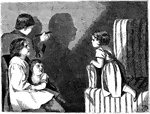
Shadow Drawing
An illustration of a young boy tracing his shadow on a wall while three young girls watch.

Sundial
A sundial is a device that measures time by the position of the Sun. In common designs such as the horizontal…
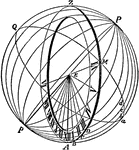
Vertical South Dial
In the common vertical dial, the shadow-receiving plane is aligned vertically; as usual, the gnomon's…
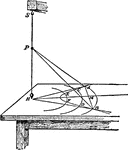
Polar Dials
In polar dials, the shadow-receiving plane is aligned parallel to the gnomon-style. Thus, the shadow…

Shadow Sail
"Shadow-sail, a sail designed to take the place of he regular jib-headed spinnaker ... a, shadow-sail;…
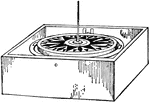
Shadow Pin
"A slender length of brass resting in a small brass button and designed to stand vertically on the center…

Shadows of Curvilinear Objects
"A globe casts its shadow upon the ground; the sun's rays parallel with the picture at an angle of 45°…
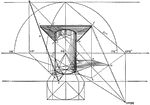
Shadows of an Column Supporting a Horizontal Square
"A column supporting a horizontal square slab at right angles with the picture plane. A pole leans against…
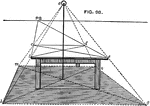
Shadow of a Table
An illustration of a shadow from a table with the sun directly perpendicular above the table.
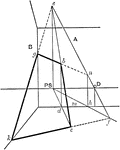
Shadow of an Pole
"A pole is leaning against a wall A, against which it casts part of its shadow, and the remainder upon…
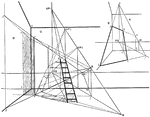
Shadow of an Ladder
"A ladder leaning against a wall casts it shadow partly on the wall C; it is continued on an open door…
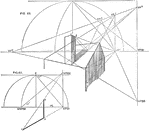
Shadow of a Perpendicular Object
"To show how a shadow if a perpendicular object is to be projected on an inclined plane." -Benson, 1891

Black Forest Village
View of a village in the Schwartzwald, or Black Forest. The Black Forest stands in the elbow formed…

Sense of Sight
In animals there are different types of sight. Some have what we call simple eyes. The simplest eyes…
